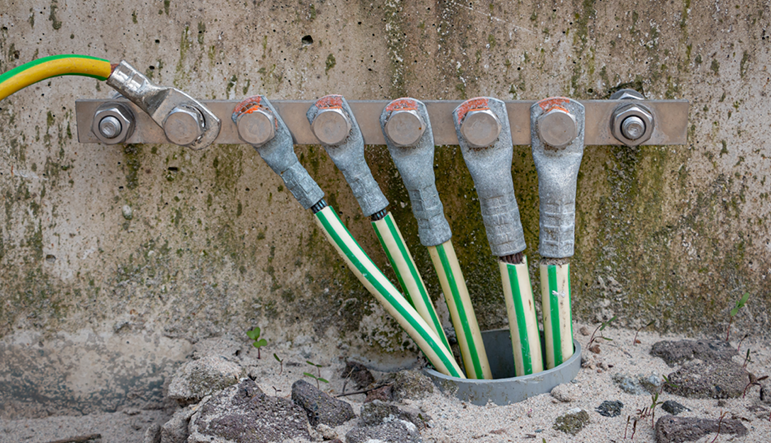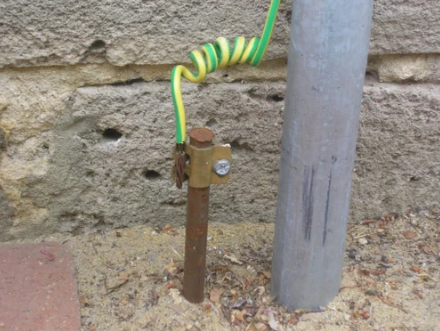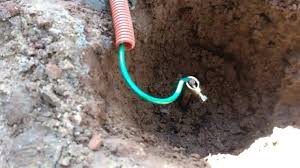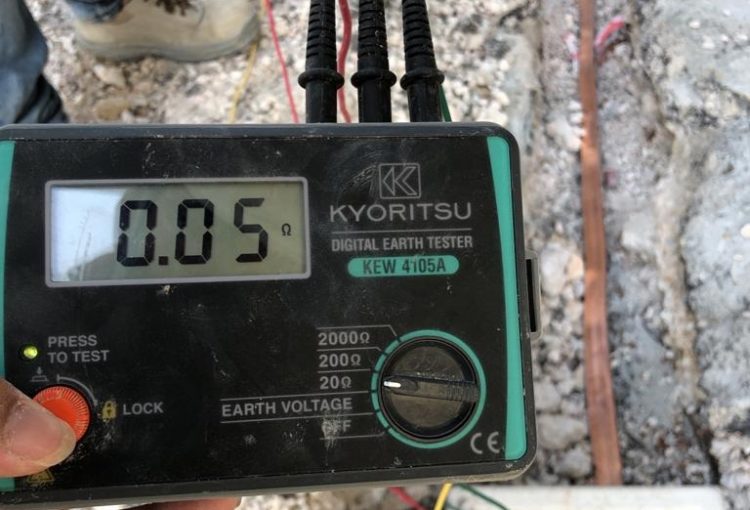Best Electrical Earthing Boring Service in Bangladesh
What is Electrical Earthing Boring?
Millat Pumps Limited is providing an Electrical Earthing Boring Service that is offered using quality proven components. Our offered services can be availed from us at leading market price within the committed time period. A grounding electrode conductor connects one leg of an electrical system to one or more earth electrodes. in Electrical Earthing Boring The equipment bonding conductor is usually also used as the equipment earthing conductor. Metal water pipe used as grounding electrode. In other words, to connect the metallic parts of electric machinery and devices to the earth plate or earth electrode through a thick conductor wire for safety purpose is known as Earthing or grounding or Electrical Earthing Boring. Electrical Earthing Boring can be said as the connection of the neutral point of a power supply system to the earth so as to avoid or minimize danger during discharge of electrical energy. To earth or Electrical Earthing Boring rather, means to connect the part of electrical apparatus such as metallic covering of metals, earth terminal of socket cables, stay wires that do not carry current to the earth.

Electrical Network Earthing:
The process of electrically Electrical Earthing Boring connecting to the earth itself is often called “earthing”, particularly in Europe where the term “grounding” is used to describe the above ground wiring. The main reason for doing earthing in electrical network is for the safety. When all metallic parts in electrical equipment are grounded then if the insulation inside the equipment fails there are no dangerous voltages present in the equipment case. If the live wire touches the grounded case then the circuit is effectively shorted and fuse will immediately blow. When the fuse is blown then the dangerous voltages are away.
Purpose of Earthing



Safety for Human life, Building and Equipment:
To save human life from danger of electrical shock or death by blowing a fuse. To protect buildings, machinery & appliances under fault conditions by Electrical Earthing Boring. To ensure that all exposed conductive parts do not reach a dangerous potential. To maintain the voltage at any part of an electrical system at a known value so as to prevent over current or excessive voltage on the appliances or equipment. To provide an alternative path for the fault current to flow so that it will not endanger the user by Electrical Earthing Boring. To provide safe path to dissipate lightning and short circuit currents. To provide stable platform for operation of sensitive electronic equipment.
Voltage stabilization:
Every transformer can be considered a separate source. There are many sources of electricity. If there were not a common reference point for all these voltage sources it would be extremely difficult to calculate their relationships to each other.
Over voltage protection:
Unintentional contact with higher voltage lines can cause dangerously high voltages to the electrical distribution system. Electrical Earthing Boring provides an alternative path around the electrical system to minimize damages in the System.
Pipe type Earthing:
These types of earth pit are generally filled with alternate layer of charcoal & salt or earth reactivation compound. For Pipe type earthing normal practice is to use GI pipe of 75 mm diameter, 10 feet long welded with 75 mm diameter GI flange having 6 numbers of holes for the connection of earth wires and inserted in ground by auger method.
Plate type earthing:
These types of earth pit are generally filled with alternate layer of charcoal & salt up to 4 feet from the bottom of the pit. Generally for plate type earthing normal Practice is to use Cast iron plate of size 600 mm x600 mm x12 mm for Electrical Earthing Boring. OR Galvanized iron plate of size 600 mm x600 mm x6 mm. OR Copper plate of size 600 mm 600 mm 3.15 mm. Plate burred at the depth of 8 feet in the vertical position and GI strip of size 50 mmx6 mm bolted with the plate is brought up to the ground level Electrical Earthing Boring.
Construction of Earthing Pit:
Maintain less than one Ohm Resistance from EARTH PIT conductor to a distance of 15 Meters around the EARTH PIT with another conductor dip on the Earth at least 500 mm deep. Check Voltage between Earth Pit conductors to Neutral of Mains Supply 220V AC 50 Hz it should be less than 2.0 Volts. Salt use as electrolyte to form conductivity between GI Plate Coal and Earth with humidity. Electrical Earthing Boring Sand has used to form porosity to cycle water & humidity around the mixture. Put GI Plate (EARTH PLATE) of size 500 mm X 500 mm X 10 mm in the mid of mixture. Use Double GI Strip size 30 mm X 10 mm to connect GI Plate to System Earthling. It will be better to use GI Pipe of size 2.5″ diameter with a Flange on the top of GI Pipe to cover GI Strip from EARTH PLATE to Top Flange.
Measurement of Earth Resistance by use of Earth Tester:
For measuring soil resistivity Earth Tester is used it is measured by using Four Terminal Earth Tester Instrument. The terminals are connected by wires as in illustration. P=Potential Spike and C=Current Spike. The distance between the spikes may be 1M, 2M, 5M, 10M, 35M, and 50M. All spikes are equidistant and in straight line to maintain electrical continuity. Take measurement in different directions. It has a voltage source, a meter to measure Resistance in ohms, switches to change instrument range, Wires to connect terminal to Earth Electrode and Spikes.